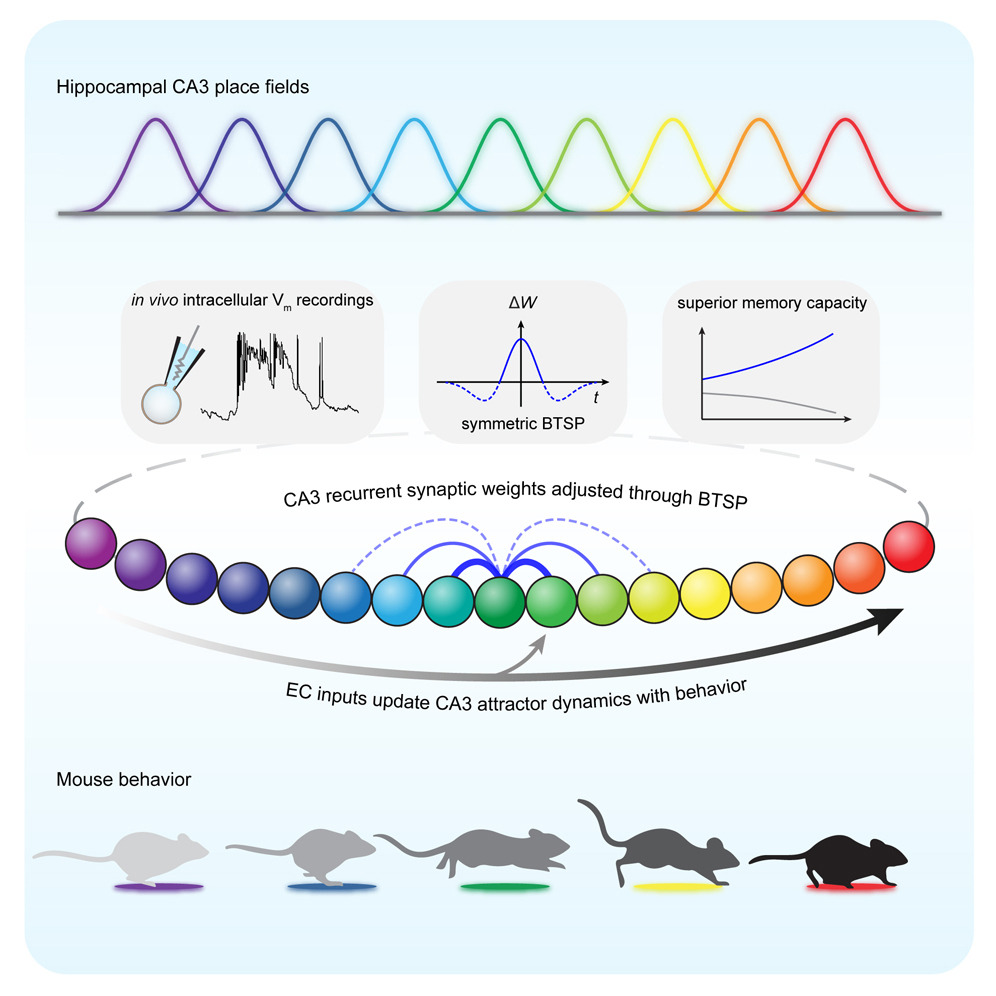
In 2017, Janelia researchers discovered a new form of synaptic plasticity -- the mechanism neurons use to change the strength of their connections, enabling learning and memory. Now, the researchers show how this new plasticity operates in a region of the brain important for episodic memory storage and retrieval.
Neurons communicate with each other by passing millisecond-long signals through junctions called synapses. Learning has been thought to happen when the coordinated firing of neurons strengthens their connections. Or, as the saying goes, neurons that fire together, wire together.
But this type of plasticity can’t explain how the brain carries out some types of learning, including episodic memory formation -- long-term memory that involves recalling specific events or experiences from the past. This type of learning happens over longer time scales and from fewer repetitions than traditional plasticity requires.
In 2017, Janelia researchers, led by group leaders Jeffrey Magee and Sandro Romani, discovered a new type of plasticity they called Behavioral Timescale Synaptic Plasticity, or BTSP, that more likely underlies this type of learning. In BTSP, plasticity happens from a single increase in a signal that lasts for several seconds – a mechanism more consistent with the formation of episodic memories.
Now, a team again led by Magee, currently an HHMI Investigator at Baylor College of Medicine, and Romani, now a senior group leader at Janelia, along with Postdoc Yiding Li and Research Scientist John Briguglio, show how a form of BTSP operates in a region of the hippocampus where episodic memories are stored and retrieved. In addition to experimental data, the researchers also modeled how BTSP is at work in this region of the brain.
Together, the new work shows how cells and circuits may enable episodic memory formation in the hippocampus, bringing researchers one step closer to understanding how we learn and remember.
###
Citation:
Yiding Li, John J. Briguglio, Sandro Romani, and Jeffrey C. Magee. “Mechanisms of memory-supporting neuronal dynamics in hippocampal area CA3.” Published October 24, 2024. DOI: 10.1016/j.cell.2024.09.041
Media Contacts
Nanci Bompey


